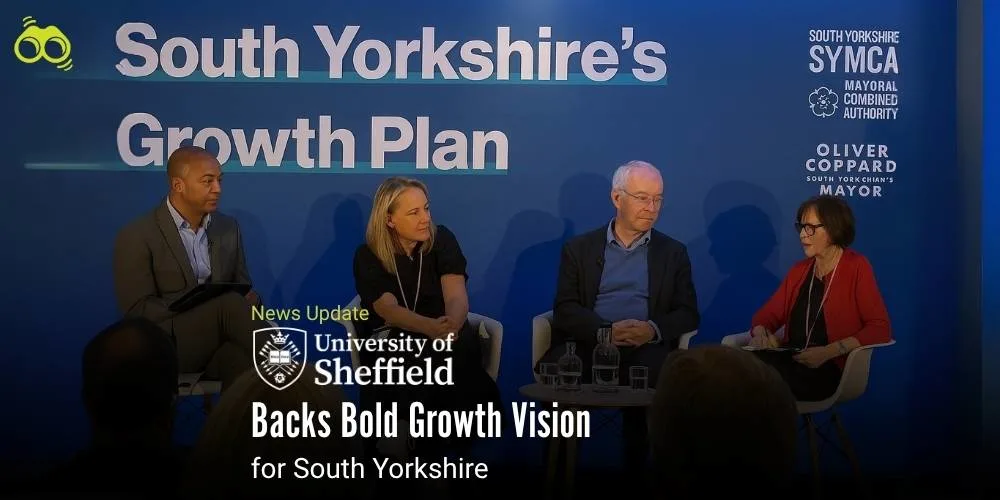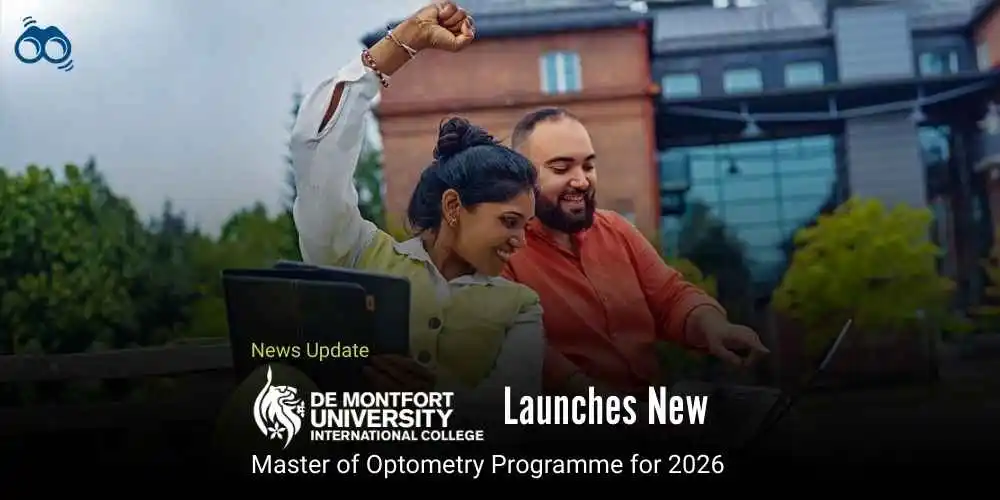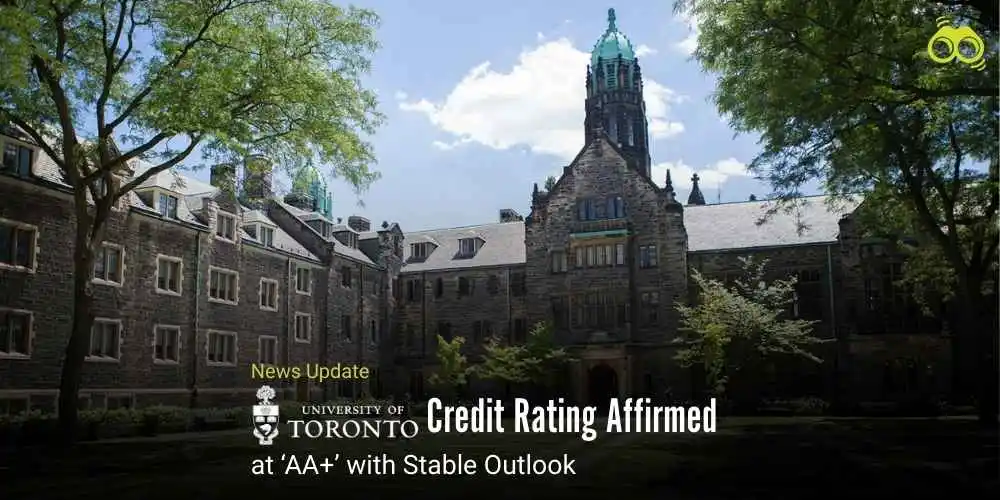Sheffield’s Innovation Assets Drive Place-Based Investment and Skills
South Yorkshire Growth Plan Backs Research-Led Economic Renewal
Regional economies in the UK are facing financial pressures along with declining numbers of domestic students. This brought into focus the role of selective universities in place-based growth. In this context, the University of Sheffield was pleased to see the launch of the South Yorkshire Growth Plan, a ten-year strategy focused on boosting the region’s economy. Led by South Yorkshire Mayor Oliver Coppard, with advice from the Mayor’s Economic Advisory Council, the plan highlights the major role of research-focused universities in driving innovation, enhancing skills, and attracting long-term investment.
Against a backdrop in which financial burdens on universities are increasing, fuelled by a drop in home student numbers and reduced A‑Level intake, such institutions as Sheffield are being asked to prove institutional viability through strategic alliances and translational research. Universities UK (UUK) has in the past emphasised funding sustainability and long-term strategy in responding to student recruitment decline and increasing capacity limitations.
The Growth Plan names the University of Sheffield as a major delivery partner, with its Advanced Manufacturing Research Centre (AMRC) being especially instrumental by providing technical support to more than 400 SMEs and having relationships with over 100 industrial partners. Technical support from the AMRC is assisting regional companies in overcoming productivity issues and competing better in a more competitive admissions and innovation environment.
Among the University's signature contributions:
COMPASS, a large collaborative research programme based alongside Factory 2050, is creating ultra-lightweight components for the aviation industry to assist with net-zero ambitions. It was the initial facility to be announced for the South Yorkshire Investment Zone, with £80 million of government, industry and University backing.
Runway Park, a 100-acre innovation park led by the University, will connect academic research and business innovation, providing adaptable space for co-working, manufacturing and leisure. The Advanced Manufacturing Park (AMP), where the AMRC and its Training Centre are based, has provided more than 2,000 young people with manufacturing skills and secured more than £350 million in private investment, showing how selective universities can drive social mobility and regeneration in a region.
The Innovation Spine, connecting the University of Sheffield and Sheffield Hallam University, will host knowledge-led start-ups and scale-ups in regeneration areas such as Station Quarter and Castlegate. In clean energy, the University is making South Yorkshire a national hydrogen and clean power jobs leader. DSIT analysis indicates that the region contains the UK's highest proportion of the Clean Tech economy at 6.9%.
Applied research facilities like the Sustainable Aviation Fuels Innovation Centre, the Gene Therapy Innovation and Manufacturing Centre, and the Energy Innovation Centre cooperate together to harness over £350 million in capacity. The centres are assisting manufacturers in driving productivity and competitiveness, and attracting international partners like Rolls-Royce, McLaren and Boeing.
Professor Ashutosh Tiwari, Deputy Vice-President for Innovation, said the University is still focused on driving economic growth and enhancing lives through research, education and innovation. He said that projects such as Runway Park and the Innovation Spine will not only tackle global issues but also increase regional resilience in the face of increasing worries about a two‑tier university system and the long-term sustainability of higher education in the UK. As competition for places grows and funding arrangements change, the University of Sheffield's contribution to the South Yorkshire Growth Plan is indicative of a wider shift in the expectations for how highly selective universities should meet national and regional ambitions.
Editor's Note
When UK universities are under increasing financial strain, declining domestic student numbers and fewer lower A‑Level admissions, the South Yorkshire Growth Plan comes as a timely reminder of what selective universities can and must achieve. The University of Sheffield's role at the heart of this decade plan is not only welcome; it is crucial. What is remarkable is the University's success in taking research and turning it into tangible impact. From COMPASS and Runway Park to the AMRC and Innovation Spine, Sheffield is not merely addressing economic austerity; it is creating the future of the region. All these initiatives demonstrate how institutional sustainability can be enhanced by strategic partnerships, translational research and place-based innovation. Universities UK (UUK) has been championing funding sustainability and more integrated thinking about student recruitment decline for years. Sheffield's addition to the Growth Plan shows what that takes in reality. It also makes a key point: if the UK is not to slide into a two‑tier university system, then universities like Sheffield need to be reinforced, not simply acknowledged, for their contribution to regional regeneration and industrial competitiveness. This is not only an issue of economic recovery. It is about remaking the worth of higher education in a transformed world. Sheffield's excellence in low-carbon energy, advanced manufacturing and skills demonstrates that selective universities are not only sustainable, they are essential.
FAQs
1. Why are selective universities facing challenges?
Selective universities are under pressure because fewer UK students are applying, while costs continue to rise. These institutions often rely on high-quality research and specialist teaching, which are expensive to maintain. When student numbers fall, income drops, but expectations around excellence and delivery remain high.
2. What happens when A‑Level intake declines?
A drop in A‑Level results means fewer students meet entry requirements. This leads to unfilled places, reduced tuition income, and increased competition between universities. Some may lower entry standards or recruit more international students, but this can create uneven access and widen the gap between well-funded and struggling institutions.
3. How might funding models adapt to current pressures?
Funding models may shift towards more flexible tuition fees, increased government support, or stronger industry partnerships. Universities might also be funded based on their regional impact or research outcomes. Without reform, many institutions could face long-term financial instability.
4. Which universities are most at risk?
Smaller universities, or those with fewer international students and limited research income, are most exposed. Institutions in areas with low student demand or limited local investment may struggle to remain viable. Even some selective universities could be affected if they rely too heavily on domestic recruitment.
5. What can Universities UK (UUK) do to support the sector?
UUK can advocate for fairer funding, promote sector-wide planning, and push for policies that protect institutional viability. It can also help universities collaborate on recruitment, share resources, and develop long-term strategies. By doing so, UUK plays a vital role in keeping the sector stable and responsive.














0 Comments (Please Login To Continue)